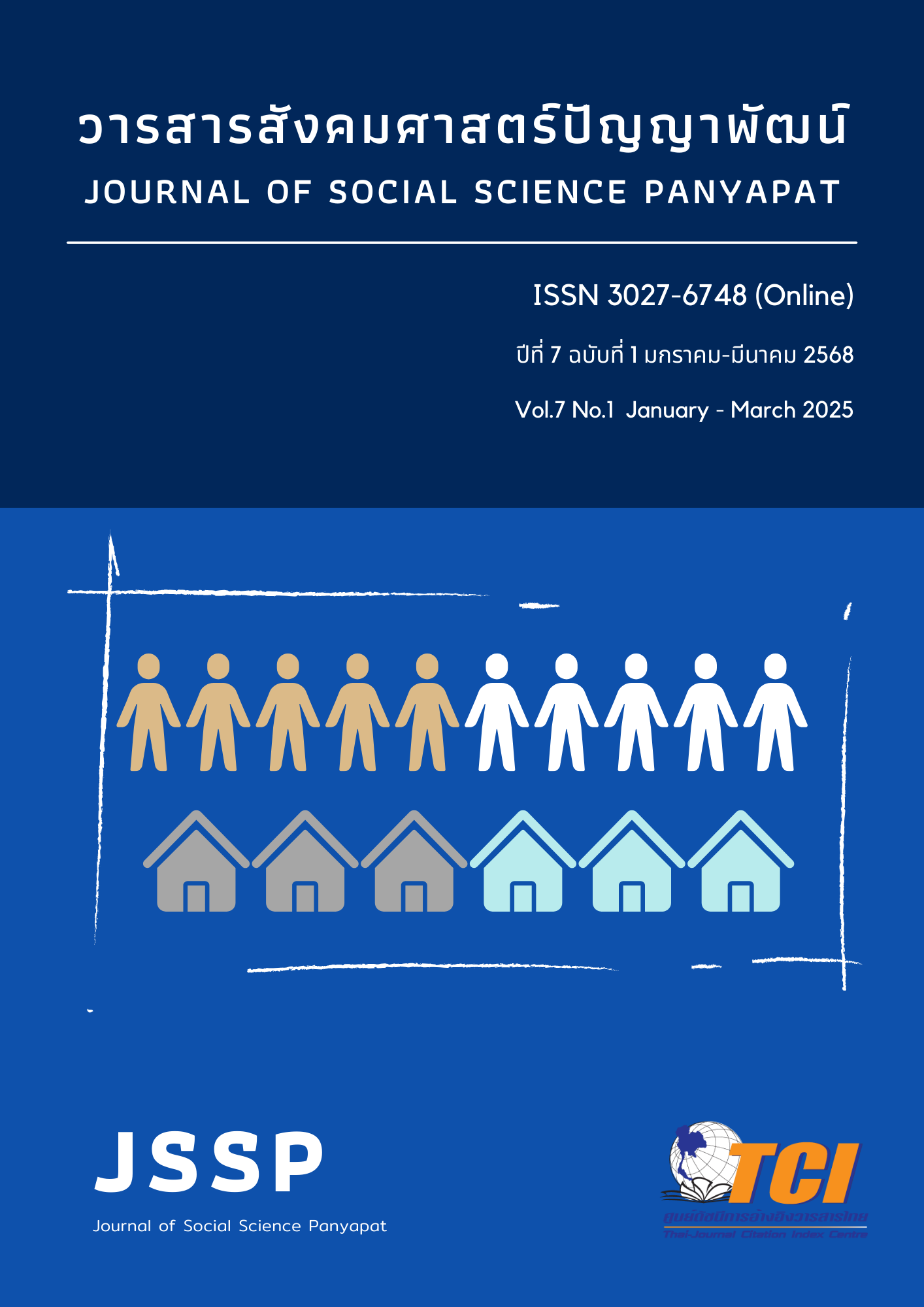The Impact of a 5E Inquiry Learning Model with Chatbot Integration on Secondary 1 Students' Science Achievement in Basic Units of Life at Sikaoprachaphadungwit School
Keywords:
The 5E’s of Inquiry-Based Learning, Chatbot, Academic Achievement, Satisfaction, Secondary EducationAbstract
This research aimed (1) to compare the post-test scores between secondary 1 students who received the 5Es inquiry-based learning model (5Es) with chatbots and students who received the traditional learning model, and (2) to study of the satisfaction of secondary 1 students towards the 5E inquiry-based learning with chatbot. This research was quasi-experimental research. The sample group used in this research, which was obtained by cluster random sampling, included, (1) the experimental group consisted of Mathayom 1/2 students who received the 5-step inquiry-based learning (5Es) method along with a chatbot, (2) the control group consisted of Mathayom 1/3 students who received traditional learning management. The research instruments used to collect data were: (1) lesson plans using the 5E inquiry-based learning with chatbot on the topic of basic units of life, (2) traditional instruction lesson plans on the topic of basic units of life, (3) a chatbot on the topic of basic units of life, (4) a learning achievement test on the topic of basic units of life, and (5) an assessment form for the satisfaction of Secondary 1 students towards the 5E inquiry-based learning with chatbot.The statistics used for data analysis were mean, percentage, and standard deviation, and independent sample t-test. The study found that: 1) the academic achievement of the experimental group of students who received the 5E inquiry-based learning with chatbot was significantly higher than those of the traditional instruction who received the normal learning management at the .05 statistical level. 2) Secondary 1 students had the highest level of satisfaction with the 5-step inquiry-based learning method using a chatbot on the topic of the basic units of living things.
References
กระทรวงศึกษาธิการ. (2566). นโยบายการศึกษาของกระทรวงศึกษาธิการ ประจำปีงบประมาณ พ.ศ. 2567 – 2568. สืบค้นจาก http://bic.moe.go.th/images/stories/pdf/นโยบายและจุดเน้น_2567.pdf.
จรรยา โท๊ะนาบุตร. (2560). รูปแบบการเรียนด้วยกระบวนการสืบเสาะหาความรู้แบบ 5E ในศตวรรษที่ 21. สืบค้นจาก https://www.kroobannok.com/83399.
ณพัฐอร บัวฉุน, นฤมล ยุตาคม และ พจนารถ สุวรรณรุจิ. (2559). สภาพการจัดการเรียนการสอนรายวิชาวิทยาศาสตร์เพื่อคุณภาพชีวิต หมวดวิชาศึกษาทั่วไป. วารสารวิจัยและพัฒนา วไลยอลงกรณ์ ในพระบรมราชูปถัมภ์, 11(2), 97-109
ธนกร สายปัญญา. (2565). แชทบอทสําหรับการจัดการเรียนรูปแบบผสมผสาน เพื่อพัฒนาการออกแบบอินโฟกราฟิก. วารสารวิชาการครุศาสตร์อุตสาหกรรม พระจอมเกล้าพระนครเหนือ, 13(3), 125-134.
พิชญะ พรมลา และ สรเดช ครุฑจ้อน. (2563). ผลการใช้แชทบอทช่วยในการจัดการเรียนรู้แบบผสมผสานสำหรับผู้เรียนระดับประกาศนียบัตรวิชาชีพในสถานศึกษาสังกัดสถาบันการอาชีวศึกษาภาคตะวันออกเฉียงเหนือ. วารสารครุศาสตร์อุตสาหกรรม, 19(2), 100-109.
มหาชาติ อินทโชติ และ สาโรช โศภีรักข์. (2558). การพัฒนารูปแบบการเรียนการสอนแบบยูเลิร์นนิงเพื่อเสริมสร้างทักษะการสร้างสรรค์ของผู้เรียนในระดับอุดมศึกษา. วารสารวิจัยและพัฒนาวไลยอลงกรณ์ในพระบรมราชูปถัมภ์, 10(1), 15-26.
สถาบันส่งเสริมการสอนวิทยาศาสตร์และเทคโนโลยี. (2565). สสวท.ปรับองค์กรให้มีศักยภาพสูงสู่เป้าหมายพัฒนาการศึกษาวิทยาศาสตร์. สืบค้นจาก https://www.ipst.ac.th/news/31187/20220818-ipst-go-to-digital.html.
Colace, F., De Santo, M., Lombardi, M., Pascale, F., Pietrosanto, A., & Lemma, S. (2018). Chatbot for e-learning: A case of study. International Journal of Mechanical Engineering and Robotics Research, 7(5), 528-533.
Fryer, L. K., Nakao, K., & Thompson, A. (2019). Chatbot learning partners: Connecting learning experiences, interest and competence. Computers in human Behavior, 93, 279-289.
O'Malley, C., Vavoula, G., Glew, J. P., Taylor, J., Sharples, M., Lefrere, P., Lonsdale, P., Naismith, L., & Waycott, J. (2005). Guidelines for learning/teaching/tutoring in a mobile environment. Retrieved from https://hal.science/hal-00696244/file/OMalley-2005.pdf.
Downloads
Published
How to Cite
Issue
Section
License
Copyright (c) 2025 Journal of Social Science Panyapat

This work is licensed under a Creative Commons Attribution-NonCommercial-NoDerivatives 4.0 International License.


